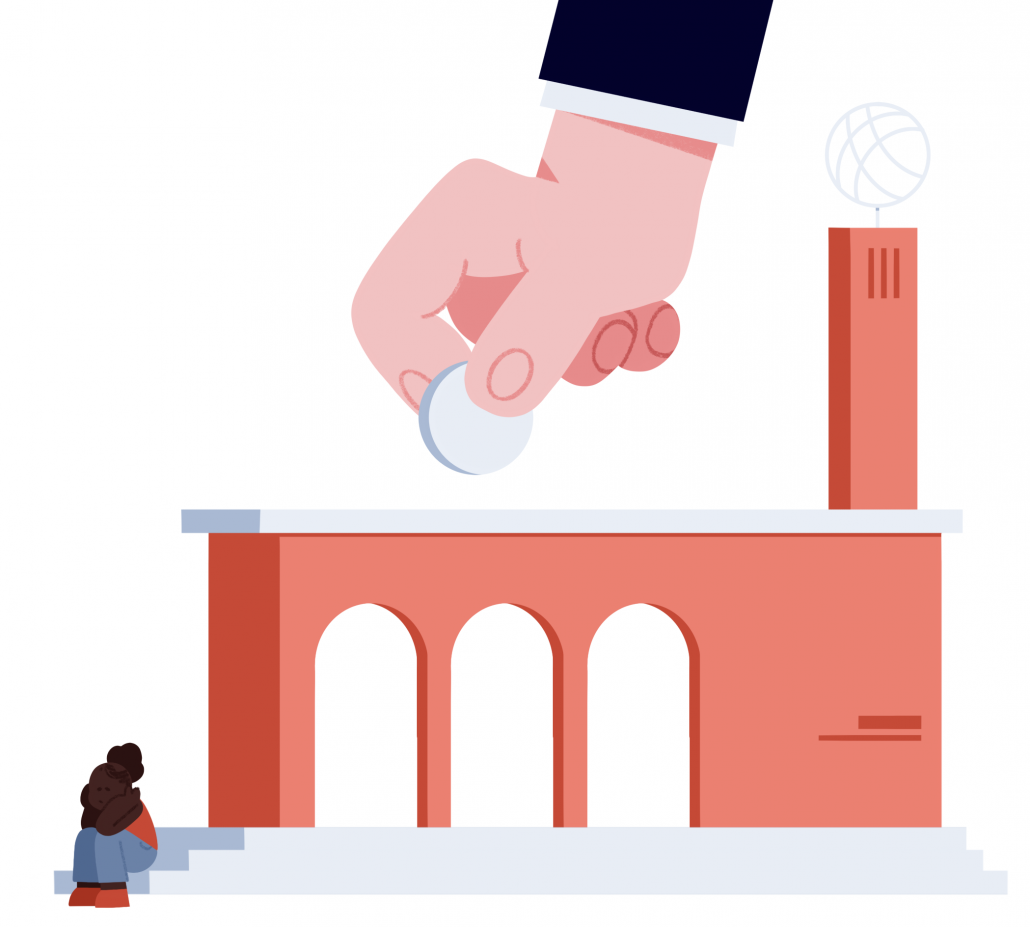Donors should use their power to incite change

As a private institution, USC relies heavily on recurring donations and alumni endowments. Because of the generosity of successful alumni and community philanthropists, USC is home to luxurious educational amenities. From the $50 million contribution from the Annenberg Foundation that led to the unveiling of the new Wallis Annenberg Hall in 2014 to the $260 million donation for unspecified improvements that the school received late last year, foundations and private donors have unparalleled power.
Just like a Sims game, campus administration, donors and the Board of Trustees constantly make additions and tweaks to campus. From revamps of the University’s brick-lined walkways to the rapid construction of pristine academic centers, the structural improvements undertaken on campus are often effective and efficient. While University donors are in large part responsible for the aesthetic value of our sunny campus, their decisions also affect campus culture and student experiences.
As many students know, Rufus von KleinSmid, the University’s fifth president, was a prominent eugenicist. While he was celebrated for the expansion of the University’s educational programs and student body during his tenure as president, his accomplishments were directly at odds with his racism and publications on “forced sterilization.” Given USC’s attention to detail, it is difficult to comprehend how such a controversial bust and building have existed on campus for so many years without change.
Von KleinSmid’s name and likeness have become infamously synonymous with USC and those with the ability to enforce major change should consider how that has impacted campus culture and life from a student perspective. Since its construction in 1966, generations of Trojans of all ethnicities have attended classes in The Center for International and Public Affairs, known until June 11 as the Von KleinSmid Center. Disturbingly, the building named after the prominent 20th-century eugenicist also houses flags of countries from around the world and features a globe atop its tower to signify the diversity of student life on campus.
President Carol Folt’s decision to remove the statue and rename the building was long overdue — petitions and protests to rename one of the largest fixtures on campus have been ongoing for several years — and it should be a wake-up call for administrators, educators, alumni, donors and affiliates of the Trojan Family. Those with money and the power to influence campus culture need to wield their power with both efficacy and awareness.
The Board, comprising some of USC’s most prominent donors and community leaders, oversees academic, student and public affairs as well as University development. From dealing with scandals to appointing campus leaders, its decisions often directly impact students’ experiences at the University. The renaming of one of the largest and most central buildings on campus is something that should have been not only acknowledged but also actualized by the Board years ago.
As a school that describes itself as “pluralistic, welcoming outstanding men and women of every race, creed and background” and “unfettered by political control, strongly committed to academic freedom,” USC must do more for its students than provide high-quality academic instruction. The administration has already made tangible change by implementing aid policies that will make a college education more financially accessible for students of all backgrounds — now, it has the opportunity to address centuries of racial marginalization and inequalities as well.
Donors, alumni and administrators of the University should pride themselves on upholding these values and understand that their influence and generosity speak volumes. It’s natural that those with large endowments in their names pull major weight when it comes to big decisions at the University, but donors should be more conscientious about where their money is going and the impact they have on students’ college experience.
Altering monuments and institutions built upon historical foundations of racial discrimination and bigotry is no small task. Statues will be taken down and names of buildings changed, but much more concentration is needed to effectively address institutionalized racism in the world of higher education. Inexhaustible discussion and action must be taken on both local and national scales in order to enact lasting positive change in what is currently a broken system. USC’s progressive stance and press statements mean nothing if they aren’t reinforced via substantive action. The University’s mere tolerance of diversity is not enough — the absence of outright racial oppression is not synonymous with equal opportunity.
From creating more scholarships for first-generation students and donating to establish resource centers for marginalized students to funding entirely new areas of study, the University must persist in confronting institutionalized racism, racial marginalization and profiling — moreover, it must celebrate and actively contribute to campus diversity and inclusion rather than just acknowledge it. The renaming of VKC is merely one (long-overdue) decision in a series of changes and improvements that must be made. USC’s donors and administrators have both the power and the responsibility to past, current and future members of the Trojan community to play an active role in inciting progress and palpable change.

